The Takin (pronounced: tah-kin, or talk-in) is a large goat-like animal that lives in the Himalayan Mountains. They look slightly similar to the mountain goat of North America, but their snouts are more humped, and their horns curve out and back.
Though they look like a cross between a goat and an antelope, they are actually more closely related to sheep. Read on to learn about the takin.
Description of the Takin
Takins are broad and stout, with long, yellowish fur and dark-colored backs. They stand no taller than 5 ft. at the shoulder, and typically weigh between 500 and 700 lbs. However, sometimes remarkable males tip the scales at over 1,000 lbs.!
These bovines carry a number of nicknames, including “gnu goat” (in references to the wildebeest) and “cattle chamois.”
Interesting Facts About the Takin
These creatures are undeniably odd. In fact, there are quite a few fun facts about them that might just knock your socks off!
- Not So Meek, Like a Sheep – The word “sheep” invokes thought of a bleating, fluffy animal that cannot defend itself. Takins are far from this helpless cousin of theirs. In fact, they sound nothing like sheep either. They open their mouths, stick their tongues out, and roar when threatened.
- Big Nose – When you look at a Takin, it is difficult to ignore their particularly large snout. This oversized sniffer is actually an adaptation to the frigid cold of the Himalayans. Just like the Saiga antelope, Takin noses are larger to warm the air coming in before it reaches their lungs.
- No Raincoat Necessary – These mammals also create their own waterproofing. Throughout their body, the pores in their skin secrete an oil that spreads around their fur. When rain falls on their coat, the oil repels it, and it beads up and falls off instead of soaking the animal.
- So Nice, They Eat it Twice! – Like many members in the bovine family, takins have multi-chambered stomachs. While grazing, they crop their food quickly, and don’t worry too much about chewing it thoroughly. Later on, when they find a safe place to rest, they regurgitate the food to chew it a second time – just like cows. We call this regurgitated food “cud.”
Habitat of the Takin
These creatures live in quite unforgiving habitats. In fact, they do not live any lower than 3,000 ft. above sea level, and sometimes live over 14,000 ft. above sea level or more! These mountainous regions are chilly, particularly in the winter.
Across this region, these animals inhabit forests, valleys, and frigid alpine regions where no trees grow. Sadly, humans are taking over much of their useable habitat for farming and livestock pastures.
Distribution of the Takin
The primary bulk of this species’ range is in China, but they live throughout the Himalayan Mountains. Their populations are somewhat fragmented, and researchers categorize animals in different regions into different subspecies.
The golden Takin lives in the Shaanxi Province of China. The Mishmi Takin inhabits parts of China, Myanmar, and portions of India. The Tibetan takin’s range extends through Tibet and some portions of China. Finally, the Bhutan Takin lives in Bhutan, as well as portions of India, Tibet, and China.
Diet of the Takin
Because they live in such harsh habitats, these large mammals must eat just about anything they can get a hold of. They are herbivores, but will feed on just about any type of plant or plant part that they encounter.
Some of the different things they forage on include leaves, bark, shoots, and flowers. They eat bamboo, oak, pine, willow, and just about any species of plant. These strong mammals even use their large bodies to knock down small trees to reach the leaves!
Takin and Human Interaction
The governments in China, Bhutan, and India have placed protections for this species. Unfortunately, people still hunt them consistently across much of their range.
While hunting is their greatest threat, habitat destruction is also quite detrimental. Because of this, various subspecies are in differing amounts of danger. The IUCN lists this species as Vulnerable, though several subspecies are in greater danger.
Domestication
Humans have not domesticated the Takin in any way.
Does the Takin Make a Good Pet
No, Takins do not make good pets. They are very large, powerful animals. Even though they look like goats, and are closely related to sheep, they are wild animals. When threatened, these large mammals are dangerous and formidable.
Takin Care
These creatures live in only a few zoos across the world. The San Diego Zoo in California was one of the first zoos with a Takin herd. They were also the first zoo outside of China to successfully breed this threatened species.
At the zoo, these great mammals live in herds, and zookeepers feed them several types of hay, pelleted feed, and specially produced biscuits to increase fiber intake.
Behavior of the Takin
The social behavior of this species varies by season. During the warmer months there is more food to go around, and herds merge into larger numbers. As the winter sets and food becomes scarce, the large herds break up into smaller groups.
Adult males usually live alone, and only interact with other members of their species while breeding. Both herds and solitary animals are most active during the early morning and late afternoon, and usually rest during the midday to chew their cud.
Reproduction of the Takin
When female takins are ready to breed, their urine changes scent, and they bellow to attract males. Once a female finds an acceptable suitor, they breed, and the male moves on.
Their gestation period is about seven months long, and they usually give birth to a single calf. The mother begins to wean the calf off of her milk when it is about two months old, but the calves remain with their mothers until they are at least a year old.

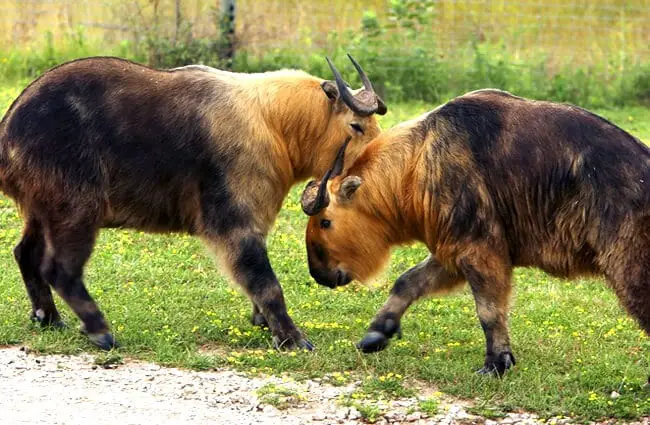
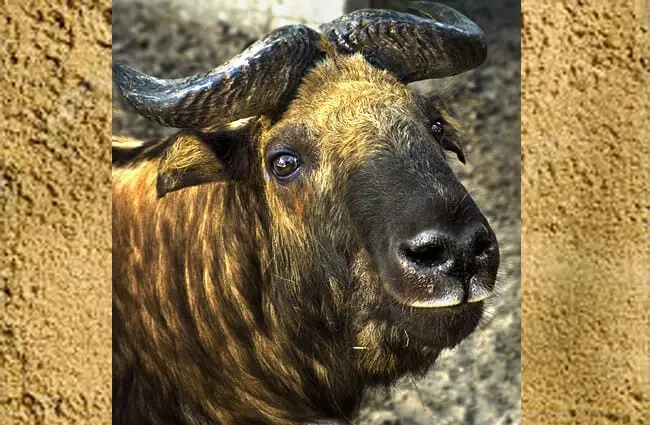

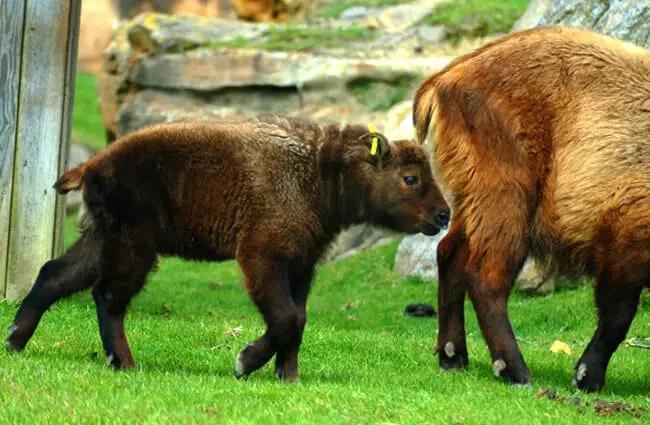
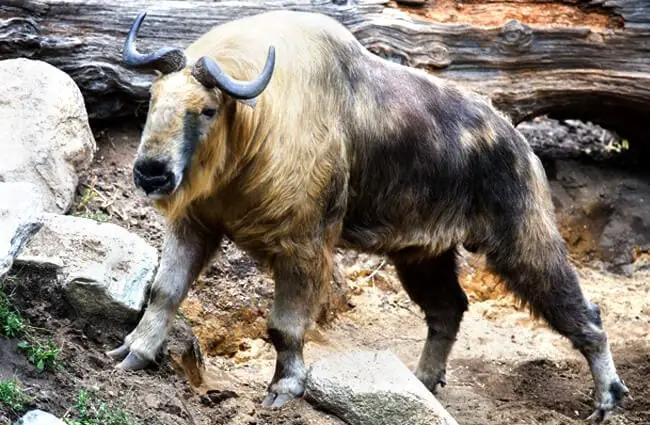
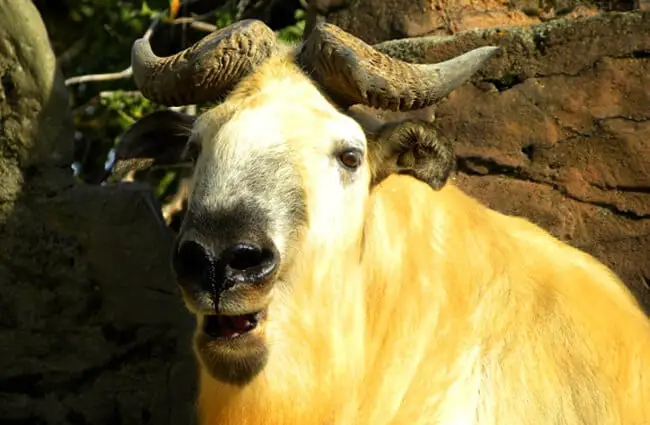

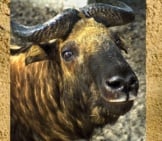
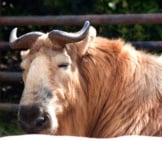
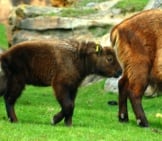
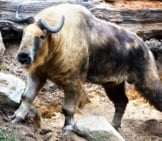
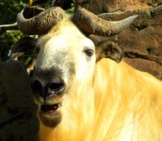
![Red Angus Closeup of a beautiful Red Angus cowPhoto by: U.S. Department of Agriculture [pubic domain]https://creativecommons.org/licenses/by/2.0/](https://animals.net/wp-content/uploads/2020/03/Red-Angus-4-238x178.jpg)












![Red Angus Closeup of a beautiful Red Angus cowPhoto by: U.S. Department of Agriculture [pubic domain]https://creativecommons.org/licenses/by/2.0/](https://animals.net/wp-content/uploads/2020/03/Red-Angus-4-100x75.jpg)

